Precious Stones of the Bible
- David Lee Brown

- Jan 6, 2024
- 12 min read
The Bible uses many different precious gemstones throughout scripture. You can find them from Genesis to Revelation, and they are often associated with the tribes of Israel and the apostles. The original apostles, not those today, who apply the title "Apostle" to themselves. Christ appointed the apostles except for Matthias, who was chosen to replace Judas by the eleven true Apostles. I am an apostle of Christ, but I would never be so self-centered and boastful to announce it as a personal title. "Apostle David" sounds very spiritual, but assigning the title to myself is brash, brazen, and braggadocious. I would never do that. But I would admire the precious stones of the Bible assigned to the apostles. The stones are to be admired enjoyed, but never worshiped or given supernatural qualities because that would be idolatry.
Precious Stones of the Bible
The first precious stone mentioned in the Bible is Onyx. God mentioned it because a river flowed from Eden, and beyond Eden, it was divided into four riverheads. The first was the river Pison, that flowed through the land of Havilah. God said there was gold, bdellium (a fragrant resin from trees related to myrrh, used in perfumes and incense), and Onyx stone.[1] The last precious stone mentioned in the Bible is Crystal, which God uses to describe the clarity of the River of Life that flows from the throne of God and of the Lamb, Jesus. Their thrones are adjacent, with Jesus at the right hand of God the Father.[2]
Stones of the Ephod and Breastplate

The Ephod was a sleeveless apron-like garment to be worn by the High Priests of Israel. The breastplate was a gold plate with inlaid precious stones attached to the Ephod, worn by the High Priests (Arron and his sons, initially). Two onyx stones were polished and engraved with the names of the 12 sons of Abraham, six on one stone and six on the other, and inlaid into a gold broach positioned on each of the priest's shoulders attached to the breastplate with gold chains.[3] The names on the stones and the corresponding stones in the breastplate were arranged by birth – oldest son to youngest son.
The stones in the breastplate were sardius, topaz, and carbuncle in the top row, emerald, sapphire, and diamond in the second row, ligure, agate, and amethyst in the third row, and in the last row, beryl, onyx, and jasper. Each coincided with and represented the sons of Abraham (Reuben, Simeon, Levi, Judah, Dan, Naphtali, Gad, Asher, Issachar, Zebulun, Joseph, and Benjamin) according to their birth order.
Stones of the 12 City Walls of New Jerusalem and the Apostles
The city walls of New Jerusalem are described as having 12 foundation stones in Revelation 21:18-20. They are jasper, sapphire, chalcedony, emerald, sardonyx, sardius, chrysolite, beryl, topaz, chrysoprasus, jacinth, and amethyst. These stones are associated with the twelve tribes of Israel and the original twelve Apostles, Peter, Andrew, James (son of Zebedee), John, Phillip, Bartholomew, Thomas, Matthew, James (son of Alphaeus), Matthias (who replaced Judis), Lebbeaus (Thaddaeus), and Simon. Each Apostle is associated with the stones mentioned above in order. In different parts of scripture, the stones related to the person or tribe differ. However, this perceived discrepancy is not a problem because the stones are not to be worshiped. The various stones are used in different circumstances and for different purposes, and association with a stone may change according to God's will over time.
Precious Stones of the Bible in Alphabetical Order
Adamant (Diamond)
Agate
Amethyst
Beryl
Carbuncle (Garnet)
Chalcedony
Chrysolite (Peridot)
Chrysoprasus
Coral
Crystal
Diamond
Emerald
Jacinth (Zircon)
Jasper
Ligure (Lapis lazuli)
Onyx
Pearl
Rubies
Sapphire
Sardius
Sardonyx
Topaz
Precious Stones of the Bible Description
Adamant means diamond and comes from the Greek word adamas. This stone is mentioned in Ezekiel 3:9 and Zechariah 7:12. I will share more when I talk about diamonds.

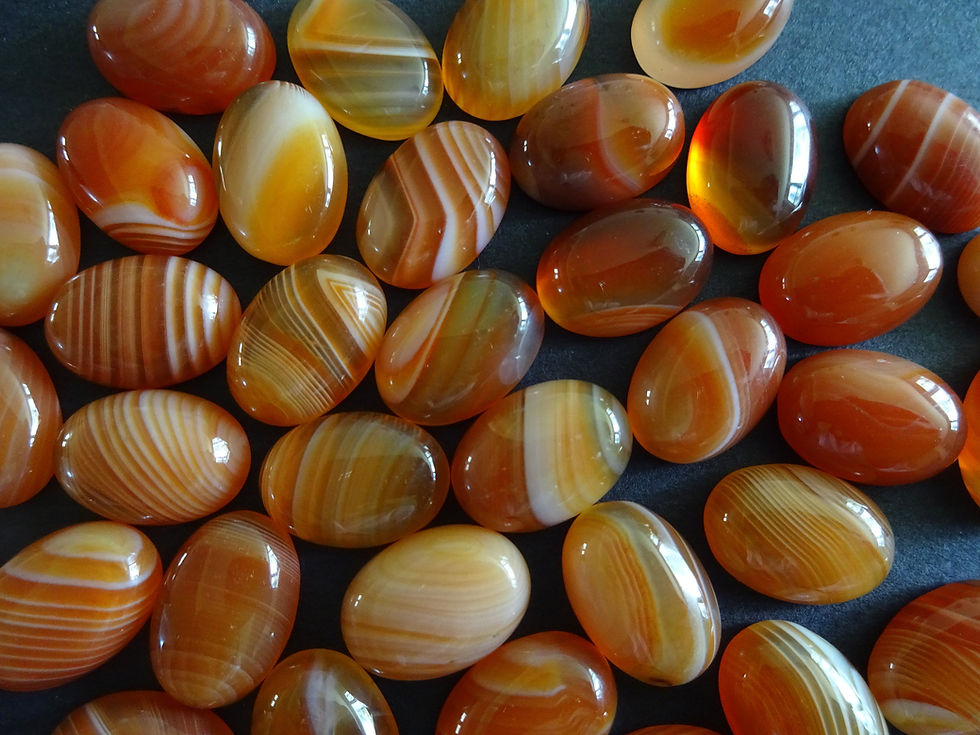
Agate is the banded variety of chalcedony stone, which comes in various colors. Agates are primarily formed within volcanic and metamorphic rocks. "Agates are most found as nodules within the cavities of volcanic rocks. These cavities form from the gases trapped within the liquid volcanic material forming vesicles. Cavities fill with silica-rich fluids from the volcanic material, and layers are deposited on the cavity walls, slowly working inwards. The first layer deposited on the cavity walls is the priming layer. Variations in the solution's character or in the deposition conditions may cause a corresponding variation in the successive layers. These variations in layers result in bands of chalcedony, often alternating with layers of crystalline quartz forming banded agate."[4] Exodus 28:19, Exodus 39:12, Isaiah 54:12, Ezekiel 27:16
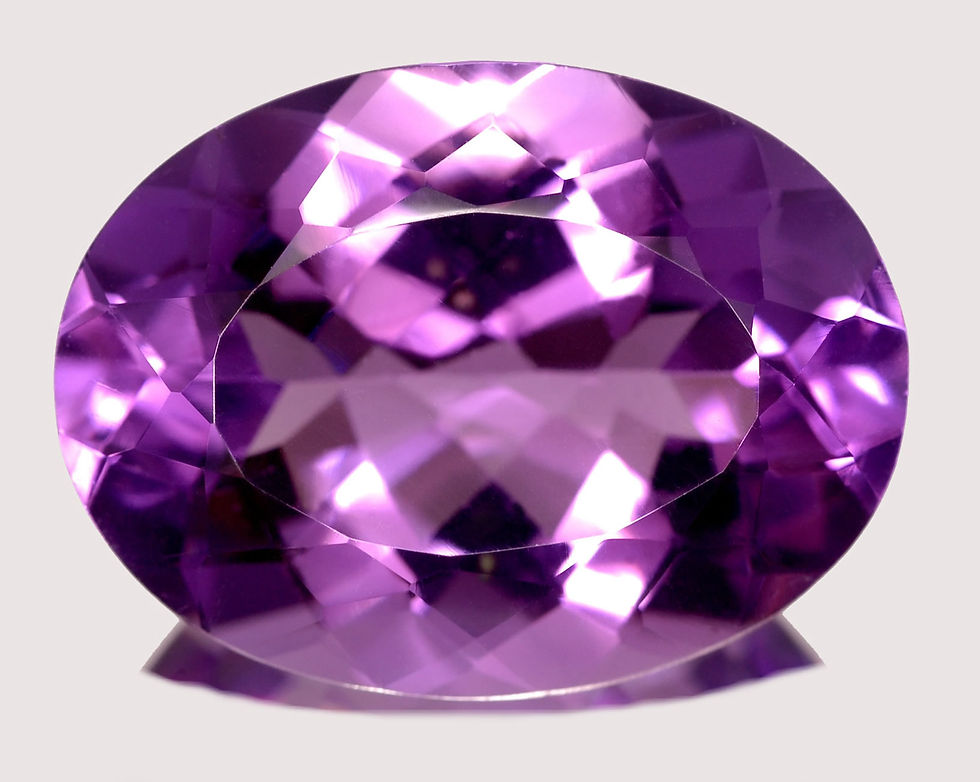

Amethyst is a violet or purple variety of quartz (SiO2) and owes its violet color to iron (Fe3+) impurities and, in some cases, other transition metals and the presence of other trace elements, resulting in complex crystal lattice substitutions. Irradiation causes the iron Fe3+ ions that replace Si in the lattice to lose an electron and form a [FeO4]0 color center.[5] Depending on their impurities, amethyst has a hardness of 7.0 or less on the Mohs scale of mineral hardness. Exodus 28:19, Exodus 39:12, Revelation 21:20

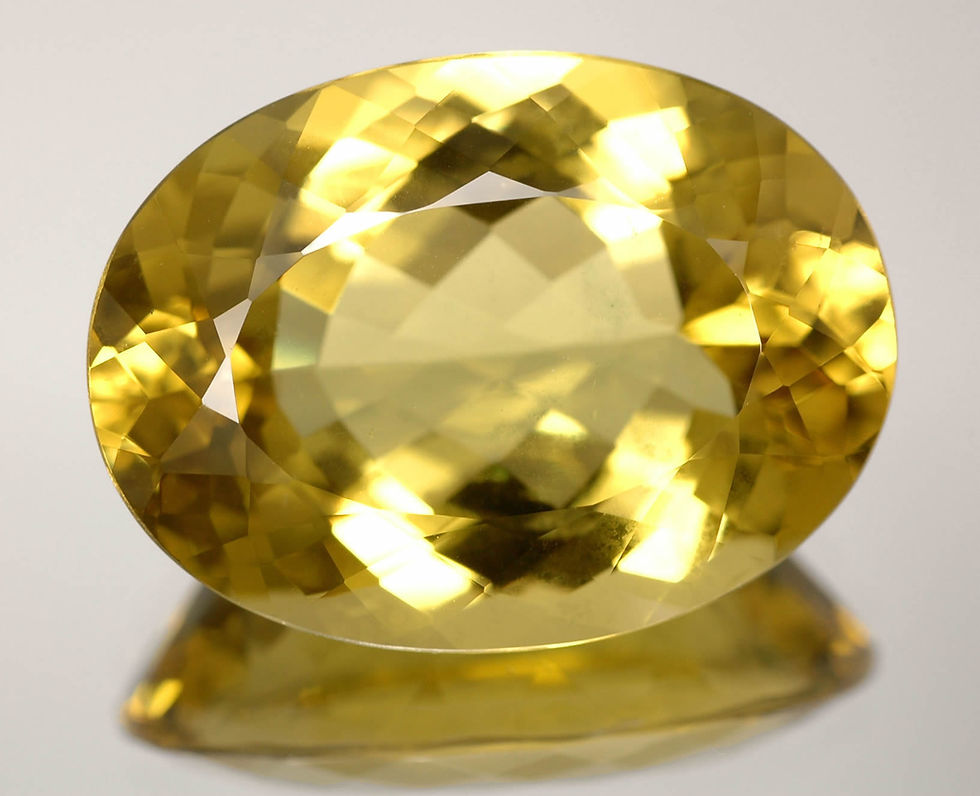
Beryl is a mineral of beryllium aluminum silicate with the chemical formula Be3Al2Si6O18. Well-known varieties of beryl include emerald and aquamarine. Naturally occurring, hexagonal beryl crystals can be up to several meters in size. Pure beryl is colorless, but impurities frequently tint it; possible colors are green, blue, yellow, pink, and red (the rarest). It is an ore source of beryllium.[6] Exodus 28:20, Exodus 39:13, Song of Solomon 5:14, Ezekiel 1:16, Ezekiel 10:9, Ezekiel 28:13, Daniel 10:6, Revelation 21:20


Carbuncle is another name for a deep red almandine gemstone cut with a smooth, convex face in a cabochon method. Traditionally, the term referred to any red gemstone, most often a red Garnet.[7] Because the chemical composition of garnet varies, the atomic bonds in some varieties are stronger than in others. As a result, this mineral group shows a range of hardness on the Mohs scale of about 6.0 to 7.5. The harder opaque garnets like almandine are reserved for use as abrasives, but the clear gem quality garnets are used in jewelry. Exodus 28:17, Exodus 39:10, Isaiah 54:12, Ezekiel 28:13
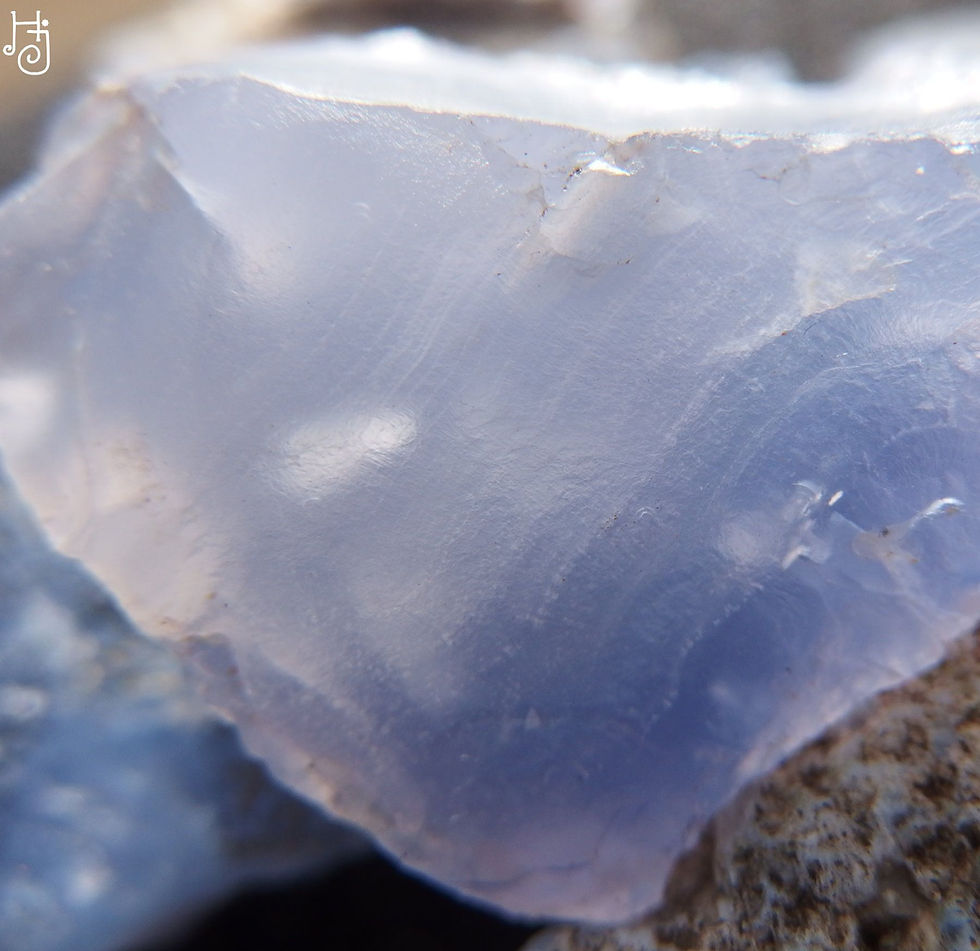
Chalcedony is a cryptocrystalline form of silica composed of very fine intergrowths of quartz and moganite. These are silica minerals, but they differ because quartz has a trigonal crystal structure, while moganite is monoclinic. Chalcedony's standard chemical structure (based on the chemical structure of quartz) is SiO2 (silicon dioxide). It
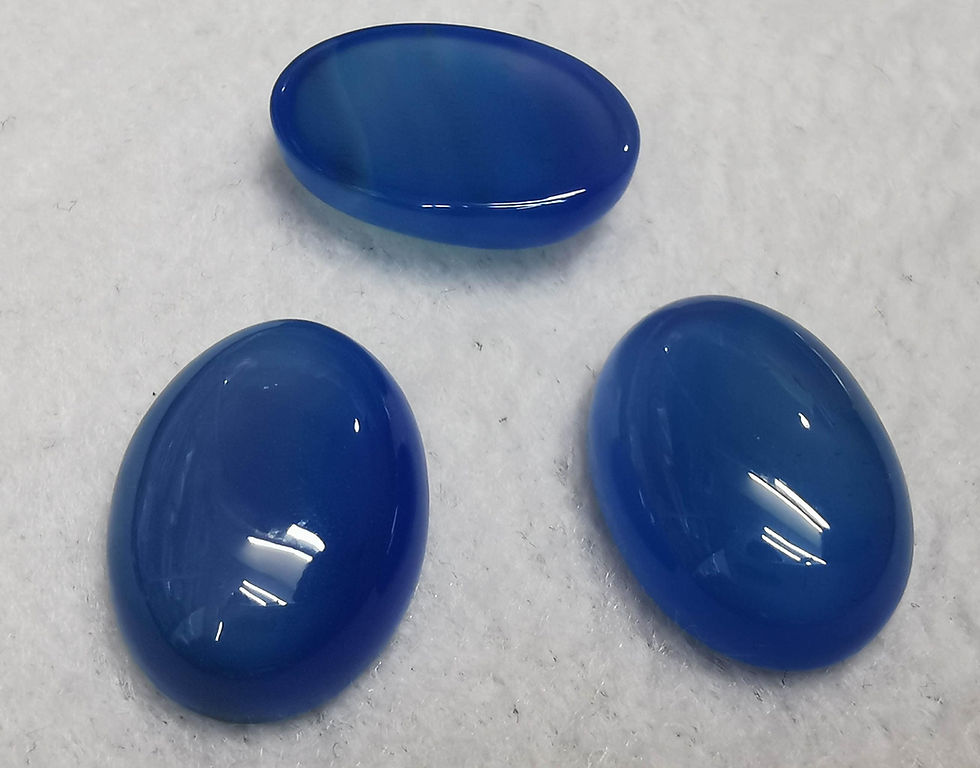
can assume a wide range of colors, but those most seen are white to gray, grayish-blue, or a shade of brown ranging from pale to nearly black.[8] Revelation 21:19

Chrysolyte, Chrysolite, or Peridot is a yellowish-green transparent variety of olivine. Peridot is one of the few gemstones that occur in only one color. Peridot is found in mafic and ultramafic rocks occurring in lava and peridotite xenoliths of the mantle. The gem

occurs in volcanic basalt and pallasitic meteorites. Peridot is one of only two gems observed to be formed not in Earth's crust but in the molten rock of the upper mantle. Gem-quality peridot is rare on Earth's surface due to its susceptibility to weathering during its movement from deep within the mantle to the surface. Peridot has a chemical formula of (Mg, Fe)2SiO4.[9] Peridot has a hardness of 6.5 – 7 on the Mohs scale of mineral hardness. Revelation 21:20


Chrysoprasus, or Chrysoprase, is a gemstone of chalcedony (a cryptocrystalline form of silica) containing small quantities of nickel. Its color is typically apple-green but varies from turquoise-like cyan to deep green. Unlike emerald, which owes its green color to the presence of chromium, the color of chrysoprase is due to trace amounts of nickel compounds in the form of tiny inclusions.[10] Revelation 21:20
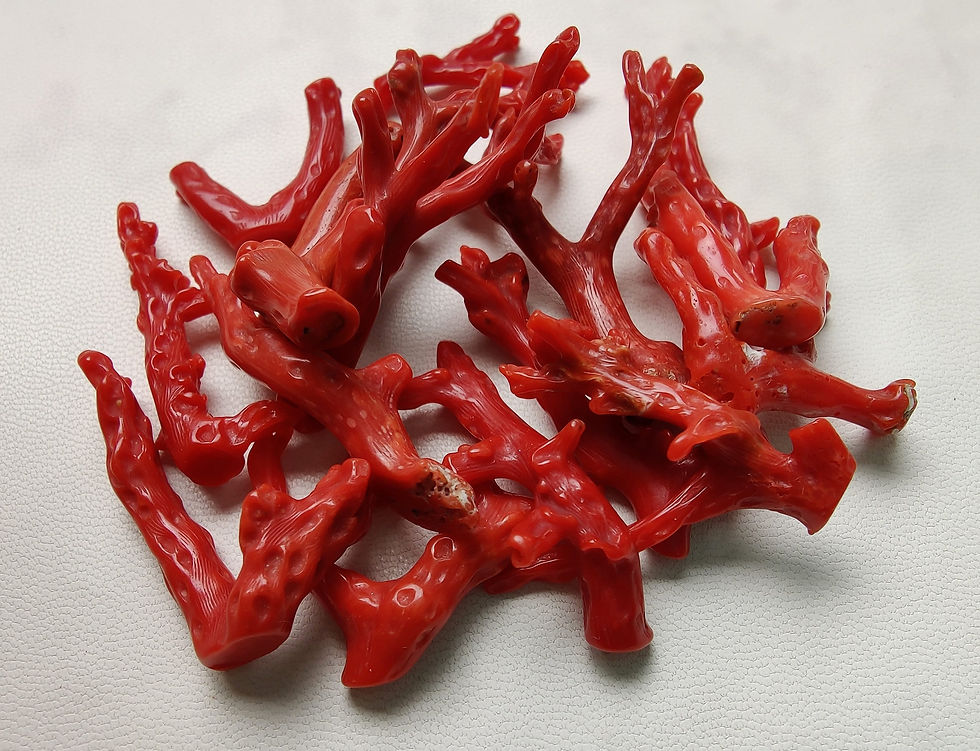

Coral, or red coral, is the common name of a genus of marine corals, Corallium. The distinguishing characteristic of precious corals is their durable and intensely colored red or pink-orange skeleton, which is used for making jewelry.[11] Job 28:18, Ezekiel 27:16
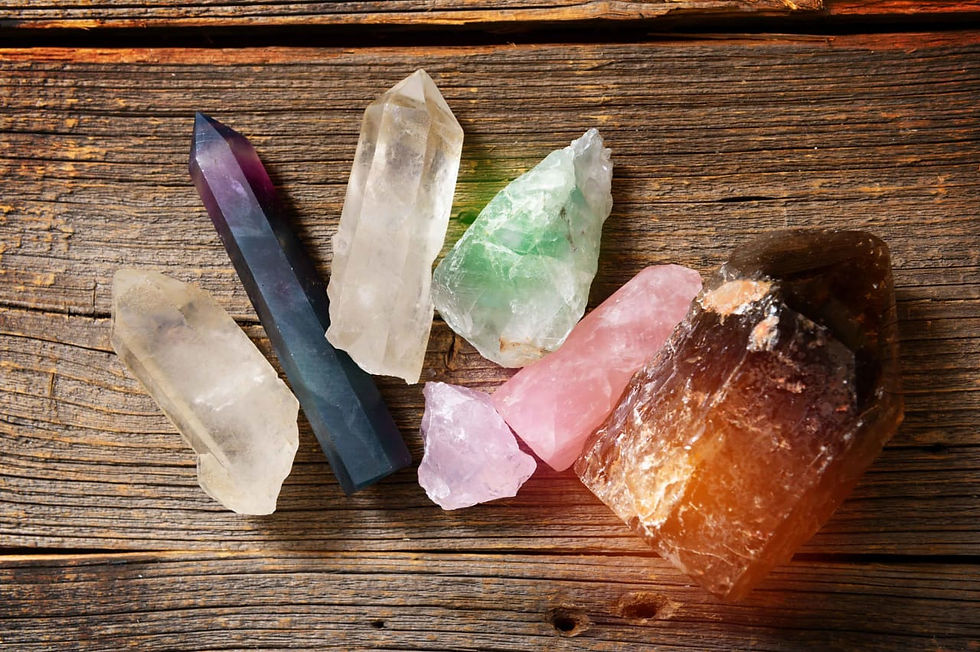
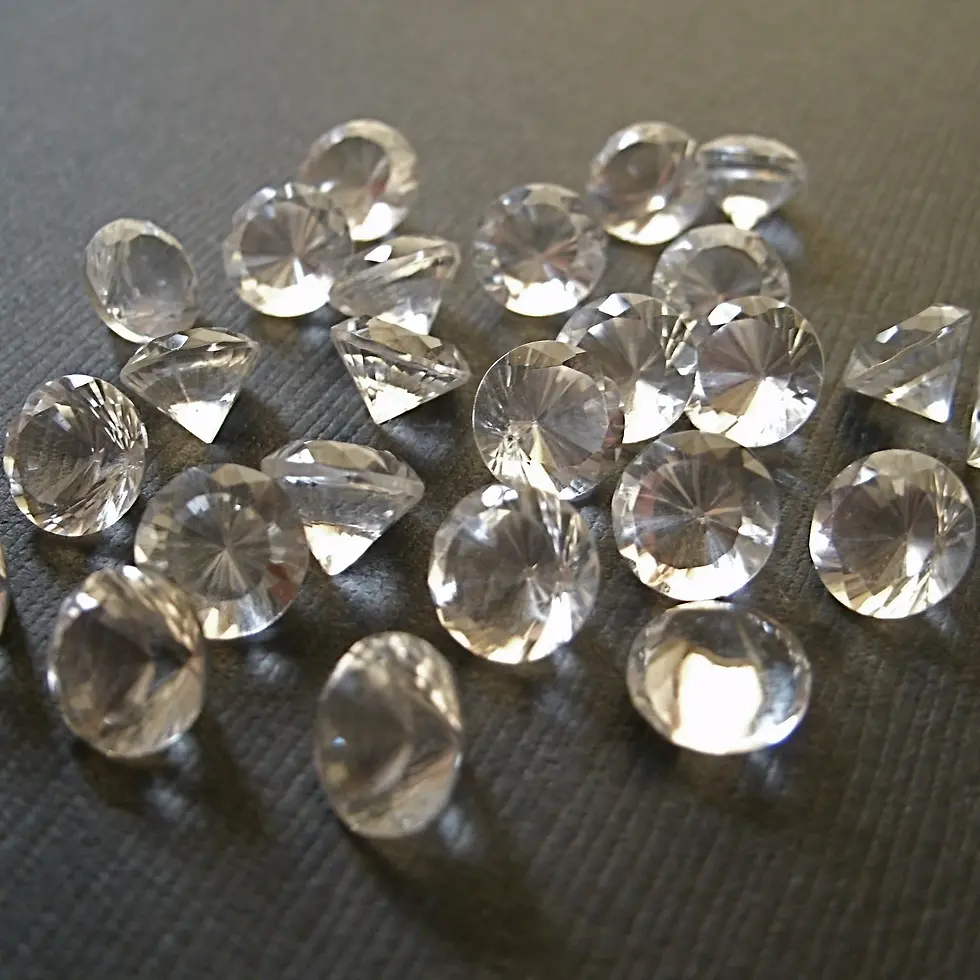
Crystal or Quartz is a hard, crystalline mineral of silica (silicon dioxide). The atoms are linked in a continuous SiO4, silicon–oxygen tetrahedra framework. Quartz, behind feldspar, is the second most abundant mineral in Earth's continental crust. Crystal, a nearly transparent form of quartz, is referred to both literally and comparatively in the Bible. In the New Testament, crystal is repeatedly compared to water: "Before the throne was as it were a sea of glass, like crystal" (Revelation 4:6). In the Bible, Crystal is a hard, rock-like substance formed by the solidification of quartz.[12] Quartz crystals have a hardness of 7.0 or less on the Mohs scale of mineral hardness, depending on their impurities. Job 28:17, Ezekiel 1:22, Revelation 4:6, Revelation 21:11, Revelation 22:1
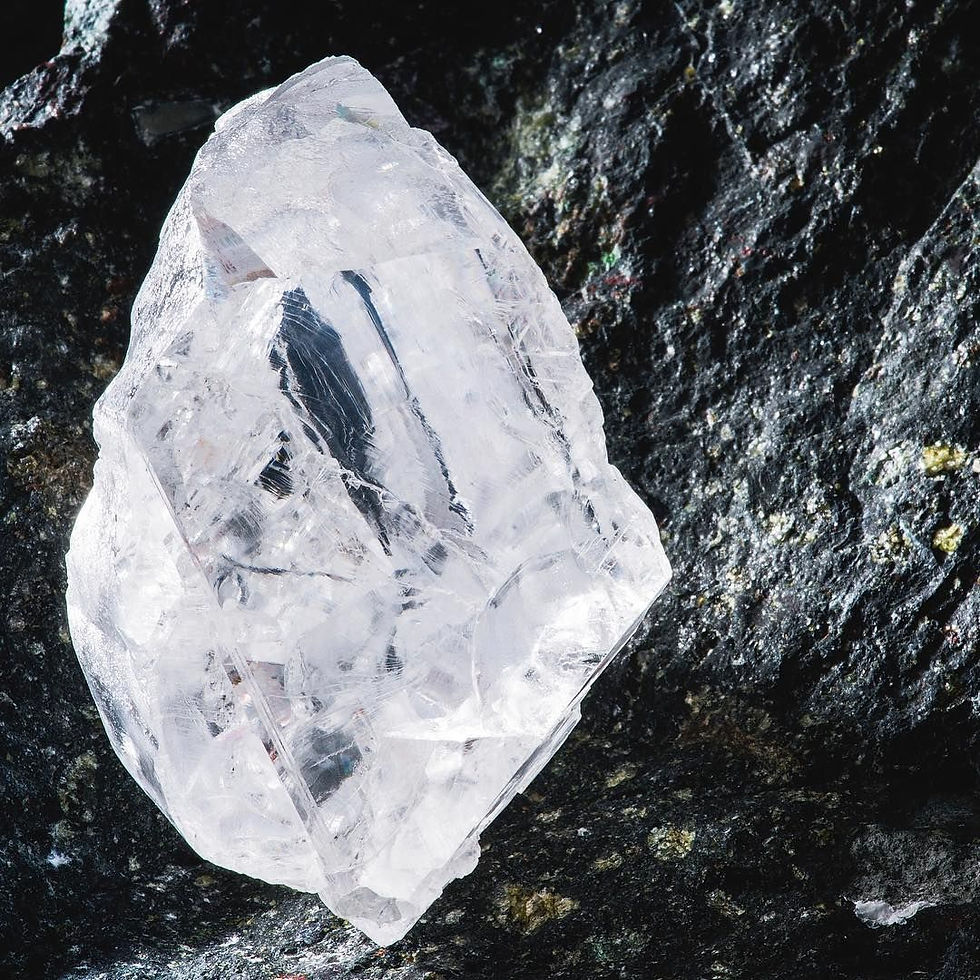

Diamond is a solid form of carbon element with atoms arranged in a crystal structure called diamond cubic. Diamond has the highest hardness and thermal conductivity of any natural material used in major industrial applications such as cutting and polishing tools. In order of increasing rarity, yellow diamond is followed by brown, colorless, then blue, green, black, pink, orange, purple, and red. "Black" diamonds are not truly black but contain numerous dark inclusions that give the gems their dark appearance. Diamonds have a hardness of 10 on the Mohs scale of mineral hardness. Exodus 28:18, Exodus 39:11, Jeremiah 17:1, Ezekiel 28:13
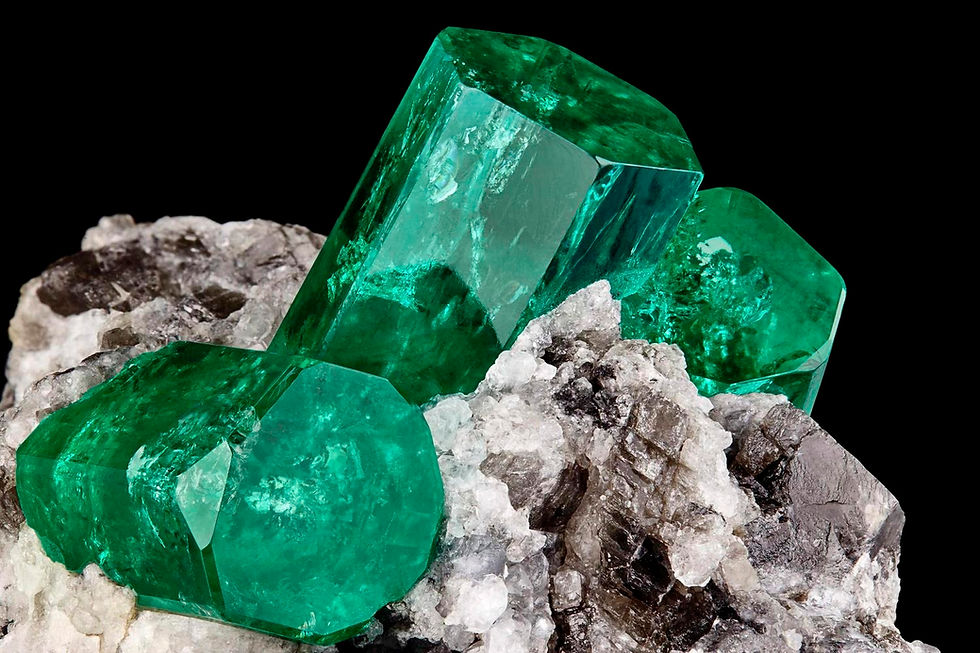
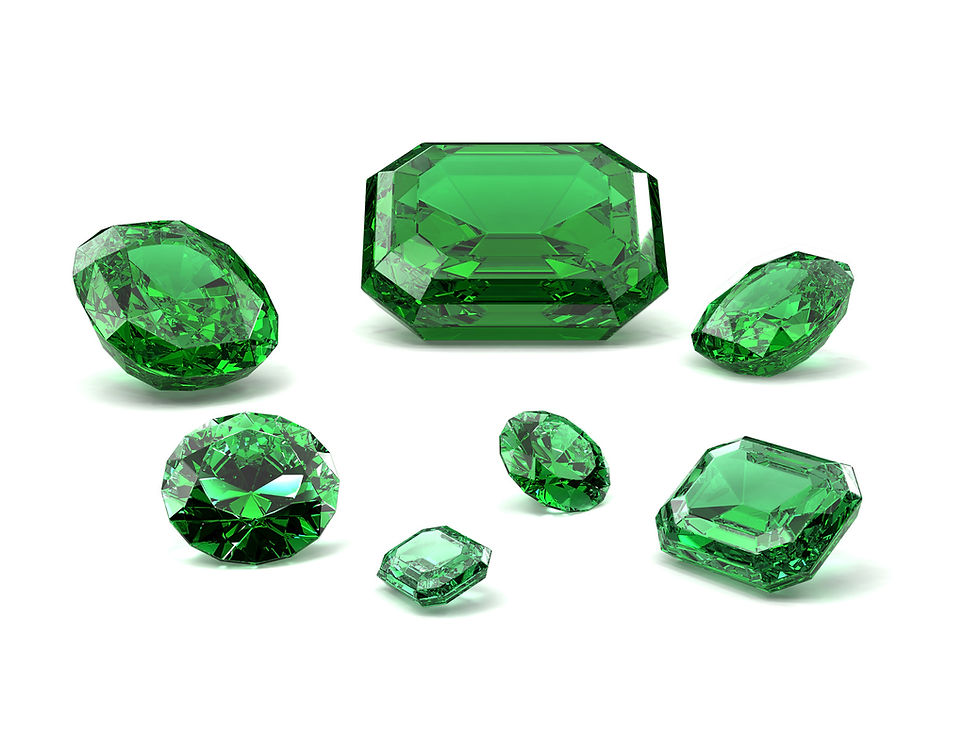
Emerald is a gemstone and a variety of the mineral beryl (Be3Al2(SiO3)6), colored green because of trace amounts of chromium or sometimes vanadium. Most emeralds have lots of material trapped inside during the gem's formation, so their toughness (resistance to breakage) is classified as generally poor. Emerald is a cyclosilicate. Emeralds occur in hues ranging from yellow-green to blue-green, with the primary hue being green. Yellow and blue are the typical secondary hues found in emeralds.[13] Emeralds have a hardness of 7.5 – 8 on the Mohs scale of mineral hardness. Exodus 28:18, Exodus 39:11, Ezekiel 27:16, Ezekiel 28:13, Revelation 4:3, Revelation 21:19
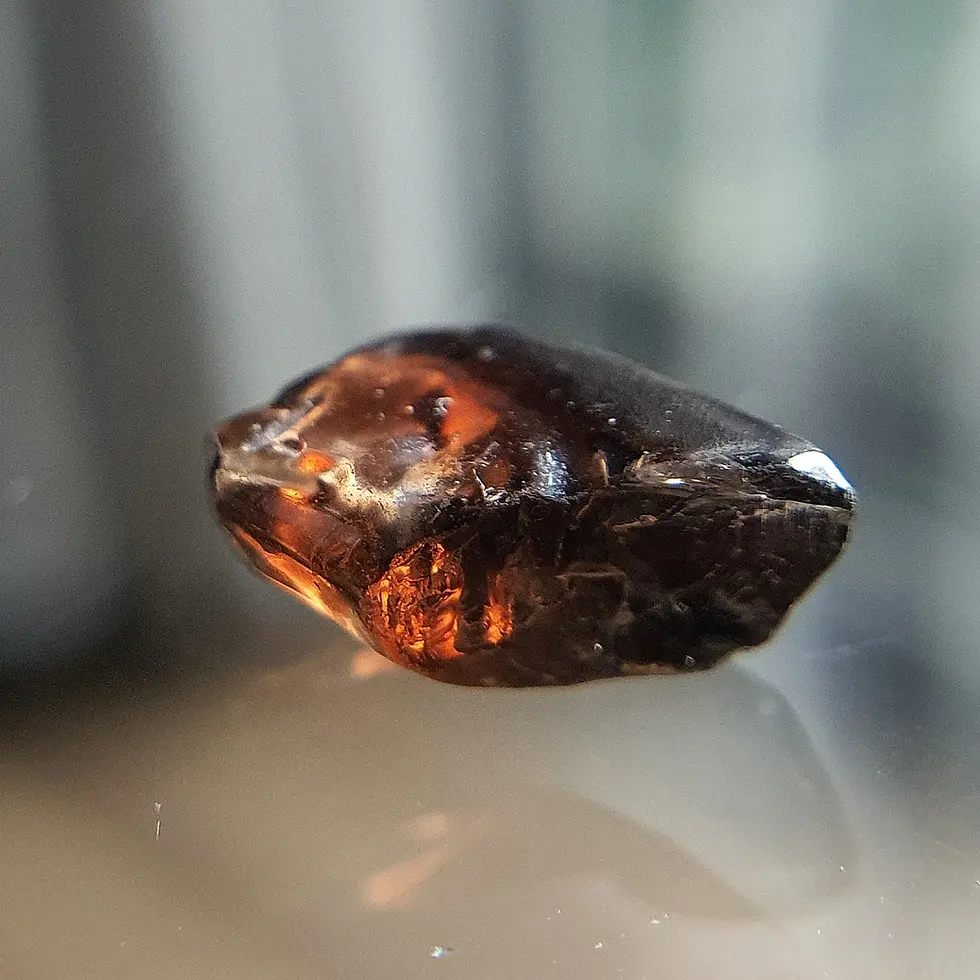

Jacinth or hyacinth is a yellow-red to red-brown variety of zircon used as a gemstone. Jacinth, commonly known as zircon, is a mineral belonging to the nesosilicate group. Its chemical formula is ZrSiO4, indicating its zirconium, silicon, and oxygen composition.[14] Revelation 9:17, Revelation 21:20
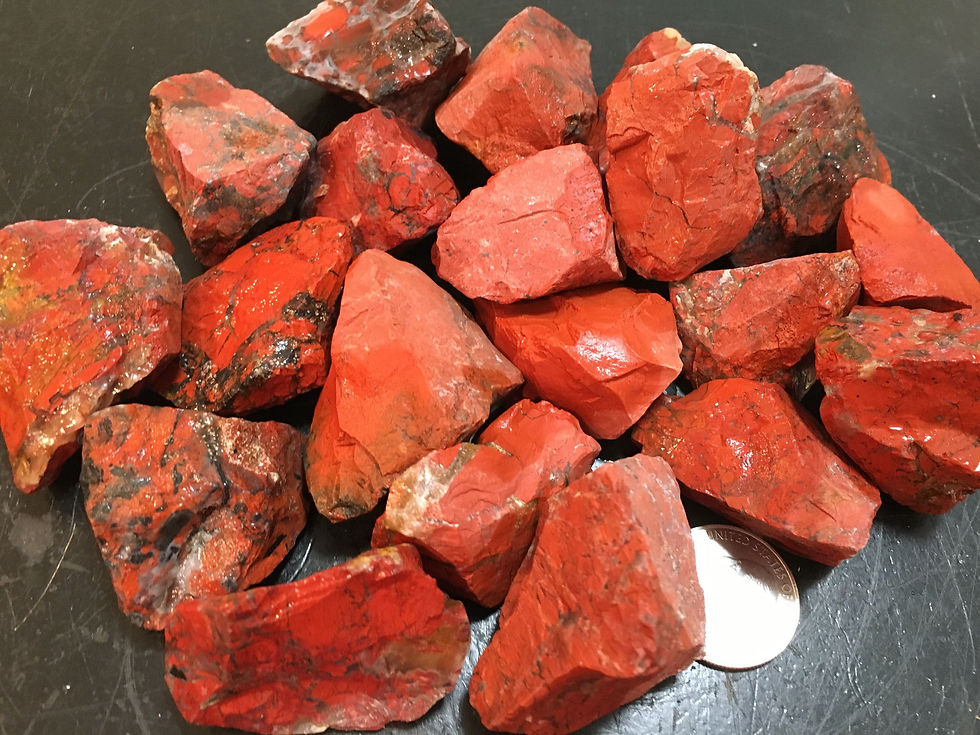
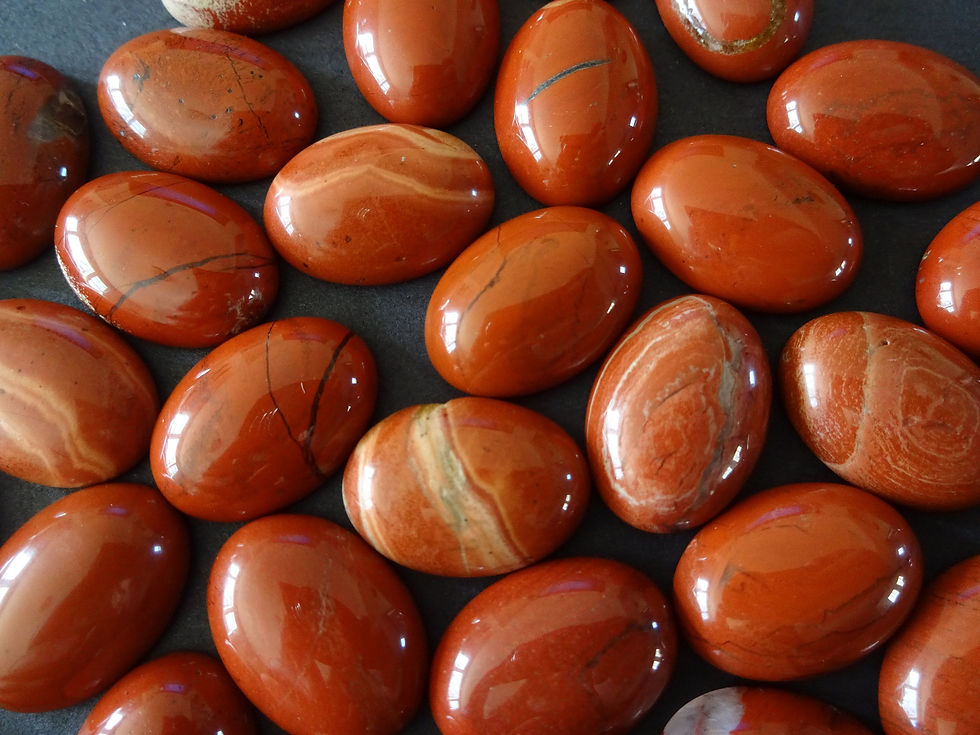
Jasper, an aggregate of micro-granular quartz or cryptocrystalline chalcedony and other mineral phases, is an opaque, impure variety of silica, usually red, yellow, brown, or green, and rarely blue. The standard red color is due to iron (III) inclusions. Jasper breaks with a smooth surface and is used for ornamentation or as a gemstone.[15] Exodus 28:20, Exodus 39:13, Ezekiel 28:13, Revelation 4:3, Revelation 21:11, Revelation 21:18, Revelation 21:19


Ligure, or Lapis lazuli, is a deep-blue metamorphic rock used as a semiprecious stone prized since antiquity for its intense color. As early as the 7th millennium BC, lapis lazuli was mined in Shortugai and other mines in Badakhshan province in modern northeast Afghanistan. Lapis lazuli artifacts, dated to 7570 BC, have been found at Bhirrana, the oldest site of Indus Valley civilization. The Indus Valley Civilization highly valued Lapis from (7570–1900 BC). Lapis beads have been found at Neolithic burials in Mehrgarh, the Caucasus, and as far away as Mauritania.[16] Exodus 28:19, Exodus 39:12


Onyx is the parallel-banded variety of chalcedony, an oxide mineral. Agate and onyx are both varieties of layered chalcedony that differ only in the form of the bands; agate has curved bands, while onyx has parallel bands. The colors of its bands range from black to almost every color. Specimens of onyx commonly contain bands of black or white. Onyx, as a descriptive term, has also been applied to parallel-banded alabaster, marble, calcite, obsidian, and opal varieties.[17] Onyx has a hardness of 6.5 – 7 on the Mohs scale of mineral hardness. Genesis 2:12, Exodus 25:7, Exodus 28:9, Exodus 28:20, Exodus 35:9, Exodus 35:27, Exodus 39:6, Exodus 39:13, 1 Chronicles 29:2, Job 28:16, Ezekiel 28:13


Pearl is a hard, glistening object produced within the soft tissue of a living shelled mollusk or another animal. Just like the shell of a mollusk, a pearl is composed of calcium carbonate (mainly aragonite or a mixture of aragonite and calcite) in minute crystalline form, which is deposited in concentric layers. The ideal pearl is perfectly round and smooth, but many other shapes, known as baroque pearls, can occur. The finest quality of natural pearls has been valued as gemstones and objects of beauty for centuries. Earrings and necklaces can also be classified on the grade of the color of the pearl: saltwater and freshwater pearls come in many different colors. While white and, more recently, black, saltwater pearls are the most popular, other color tints are also found on pearls from the oceans. Pink, blue, champagne, green, and even purple saltwater pearls are encountered, but collecting enough of these rare colors to form a complete string of the same size and shade can take years.[18] Pearls have a hardness of 2.5 – 4.5 on the Mohs scale of mineral hardness. Job 28:18, Matthew 7:6, Matthew 13:45, Matthew 13:46, 1 Timothy 2:9, Revelation 17:4, Revelation 18:12, Revelation 18:16, Revelation 21:21

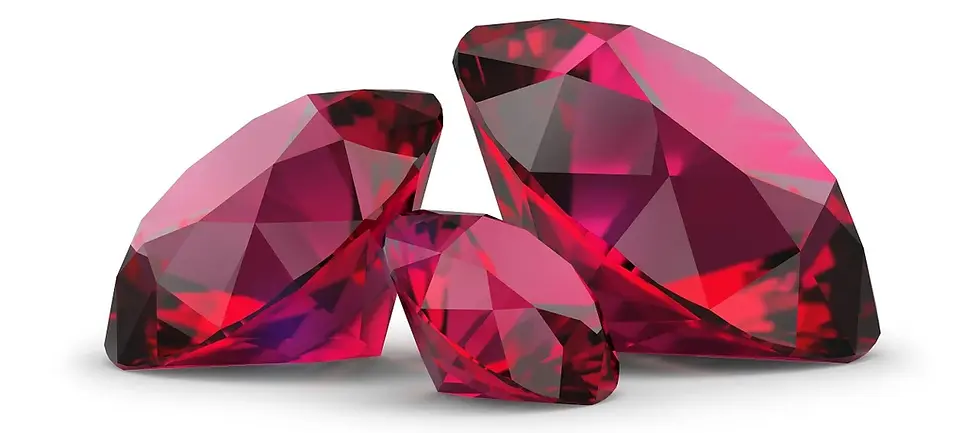
Ruby is a pinkish-red to blood-red colored gemstone, a variety of the mineral corundum (aluminum oxide). Ruby is a durable and very popular traditional jewelry gem. Other varieties of gem-quality corundum are called sapphires. Ruby is one of the traditional cardinal gems, alongside amethyst, sapphire, emerald, and diamond. The word ruby comes from ruber, Latin for red. The color of a ruby is due to the element chromium. Rubies have a hardness of 9.0 on the Mohs scale of mineral hardness. The quality of a ruby is determined by its color, cut, and clarity, which, along with carat weight, affect its value. The brightest and most valuable shade of red, called blood-red or pigeon blood, commands a hefty premium over other rubies of similar quality.[19] Ezekiel 27:16 (Ruby or Agate, depending on your Bible translation)

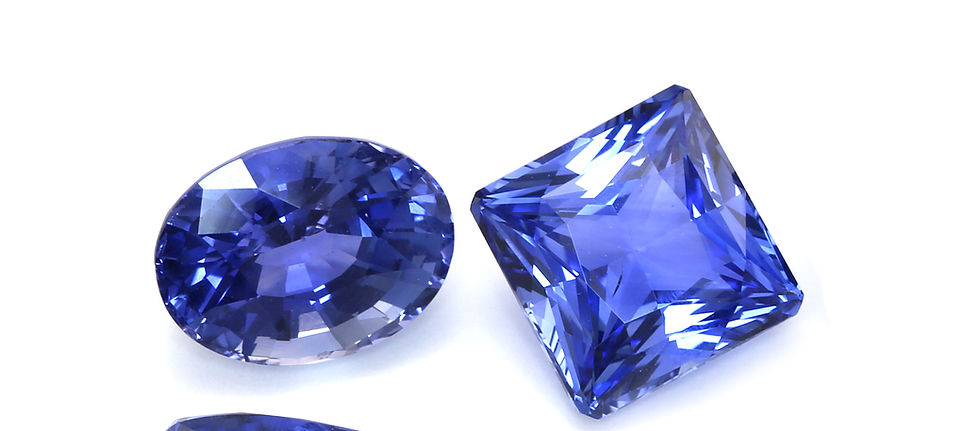
Sapphire is a precious gemstone, a variety of the mineral corundum, consisting of aluminum oxide (α-Al2O3) with trace amounts of elements such as iron, titanium, cobalt, lead, chromium, vanadium, magnesium, boron, and silicon. It is typically blue, but natural "fancy" sapphires also occur in yellow, purple, orange, and green colors; "parti sapphires" show two or more colors. The remarkable hardness of sapphires is nine on the Mohs scale (Sapphires and Rubies are the third hardest mineral, after Diamond at ten and Moissanite at 9.5). Sapphires have applications in some industries.[20] Revelation 21:19


Sardius is a variety of Carnelian (also spelled cornelian), a brownish-red mineral commonly used as a semiprecious stone. Like carnelian, sard, which is generally harder and darker; the difference is not rigidly defined, and the two names are often used interchangeably. Both carnelian and sard (Sardius) are varieties of the silica mineral chalcedony colored by iron oxide impurities. The color can vary greatly, ranging from pale orange to an intense, almost-black coloration.[21] Sardius has a hardness of 6.5 – 7 on the Mohs scale of mineral hardness. Exodus 28:17, Exodus 39:10, Ezekiel 28:13, Revelation 21:20


Sardonyx or Red Onyx is a gemstone belonging to the chalcedony family, a type of microcrystalline quartz. It is a variety of onyx, a kind of chalcedony known for its banded appearance. Sardonyx is characterized by its distinctive layers of reddish-brown or orange-brown sard (a type of chalcedony with a reddish-brown color) and white or black onyx. These bands can create beautiful and intricate patterns within the stone. Revelation 21:20

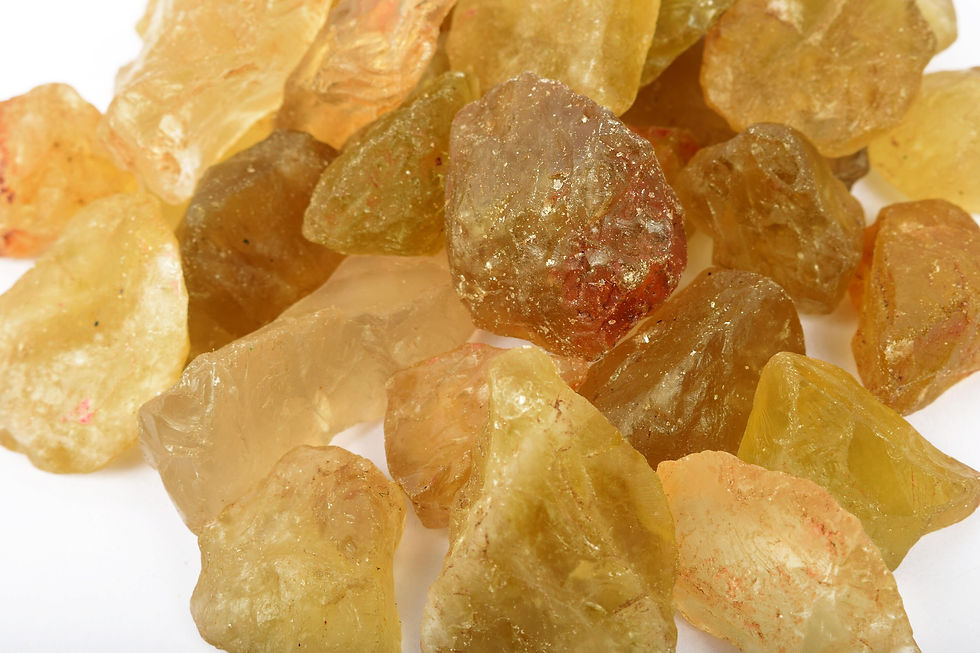
Topaz is a silicate mineral of aluminum and fluorine with the chemical formula Al2SiO4(F,OH)2. It is used as a gemstone in jewelry and other adornments. Common topaz is colorless in its natural state, though trace element impurities can make it pale blue or golden brown to yellow-orange. Topaz is often treated with heat or radiation to make it a deep blue, reddish-orange, pale green, pink, or purple. Although it is often associated with golden yellow and blue, it comes in various colors, including colorless. The rarest are natural pinks, reds, and delicate golden oranges, sometimes with pink hues. Topaz has a hardness of 8.0 on the Mohs scale of mineral hardness. Exodus 28:17, Exodus 39:10, Job 28:19, Ezekiel 28:13, Revelation 21:20
Precious Stones of the Bible
The fact that precious stones were found, mined, polished, and cut as gemstones is a testimony to people's knowledge, ingenuity, artisanship, and geologic knowledge that existed thousands of years ago. These stones adorned priests and people from every walk of life except the very poor. These ancient people, like us, were industrious and artistic and had an eye for design and beauty. This article was an interesting study that could easily be expanded into a book with vast information about the precious stones of the Bible. But I think I'll stop here for now.
Please remember that these stones are for adornment. They have no special powers, and no one should worship them as gems or objects of idolatry. They are simple adornments that enhance beauty. But they can also be objects of opulence that show everyone your wealth. God, through Paul, asks us to be humble and adorn ourselves modestly. Colossians 3:12, 1 Timothy 2:9
Enjoy your Precious Stones of the Bible, and have a blessed life!
References:
[1] Bible Gateway passage: Genesis 2:10-12 - King James Version. (n.d.). Bible Gateway. https://www.biblegateway.com/passage/?search=Genesis+2%3A10-12&version=KJV
[2] Bible Gateway passage: Revelation 22:1 - King James Version. (n.d.). Bible Gateway. https://www.biblegateway.com/passage/?search=Revelation+22%3A1&version=KJV
[3] Bible Gateway passage: Exodus 28 - King James Version. (n.d.). Bible Gateway. https://www.biblegateway.com/passage/?search=Exodus+28&version=KJV
[4] Agate. (2023, December 14). Wikipedia, the free encyclopedia. Retrieved January 6, 2024, from https://en.wikipedia.org/wiki/Agate
[5] Amethyst. (2023, December 24). Wikipedia, the free encyclopedia. Retrieved January 6, 2024, from https://en.wikipedia.org/wiki/Amethyst
[6] Beryl. (2023, October 30). Wikipedia, the free encyclopedia. Retrieved January 6, 2024, from https://en.wikipedia.org/wiki/Beryl
[7] Carbuncle (gemstone). (2024, January 2). Wikipedia, the free encyclopedia. Retrieved January 6, 2024, from https://en.wikipedia.org/wiki/Carbuncle_(gemstone)
[8] Chalcedony. (2023, December 28). Wikipedia, the free encyclopedia. Retrieved January 6, 2024, from https://en.wikipedia.org/wiki/Chalcedony
[9] Peridot. (2023, December 9). Wikipedia, the free encyclopedia. Retrieved January 6, 2024, from https://en.wikipedia.org/wiki/Peridot
[10] Chrysoprase. (2023, December 30). Wikipedia, the free encyclopedia. Retrieved January 6, 2024, from https://en.wikipedia.org/wiki/Chrysoprase
[11] Precious coral. (2024, January 4). Wikipedia, the free encyclopedia. Retrieved January 6, 2024, from https://en.wikipedia.org/wiki/Precious_coral
[12] Quartz. (2023, October 7). Wikipedia, the free encyclopedia. Retrieved January 6, 2024, from https://en.wikipedia.org/wiki/Quartz
[13] Emerald. (2024, January 6). Wikipedia, the free encyclopedia. Retrieved January 6, 2024, from https://en.wikipedia.org/wiki/Emerald
[14] Jacinth. (2023, November 3). Wikipedia, the free encyclopedia. Retrieved January 6, 2024, from https://en.wikipedia.org/wiki/Jacinth
[15] Jasper. (2024, January 4). Wikipedia, the free encyclopedia. Retrieved January 6, 2024, from https://en.wikipedia.org/wiki/Jasper
[16] Lapis lazuli. (2024, January 6). Wikipedia, the free encyclopedia. Retrieved January 6, 2024, from https://en.wikipedia.org/wiki/Lapis_lazuli
[17] Onyx. (2023, October 5). Wikipedia, the free encyclopedia. Retrieved January 6, 2024, from https://en.wikipedia.org/wiki/Onyx
[18] Pearl. (2023, December 30). Wikipedia, the free encyclopedia. Retrieved January 6, 2024, from https://en.wikipedia.org/wiki/Pearl
[19] Ruby. (2023, December 21). Wikipedia, the free encyclopedia. Retrieved January 6, 2024, from https://en.wikipedia.org/wiki/Ruby
[20] Sapphire. (2024, January 4). Wikipedia, the free encyclopedia. Retrieved January 6, 2024, from https://en.wikipedia.org/wiki/Sapphire
[21] Carnelian. (2023, December 12). Wikipedia, the free encyclopedia. Retrieved January 6, 2024, from https://en.wikipedia.org/wiki/Carnelian





Comments